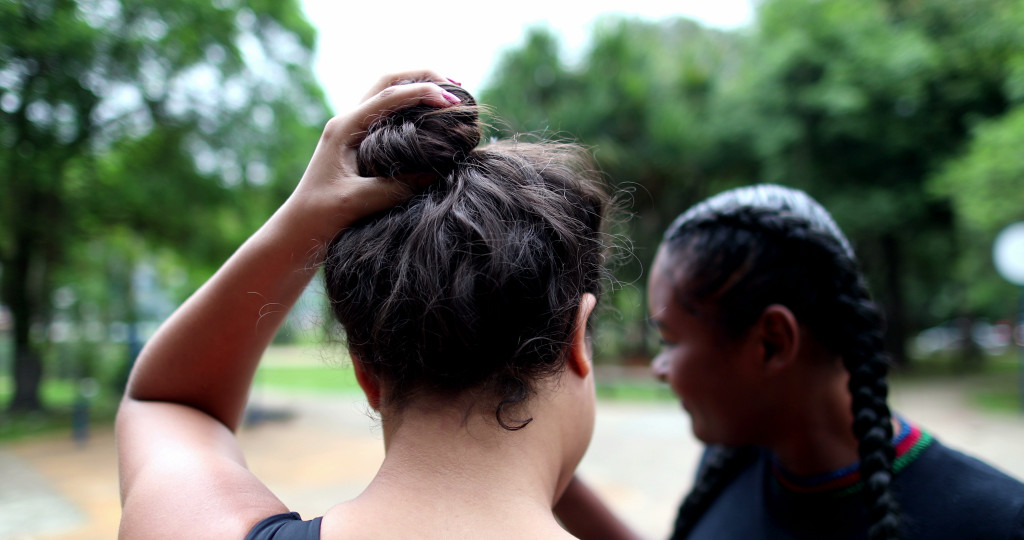- Exercise stimulates the blood flow to hair follicles, improving circulation and providing essential nutrients to promote healthy growth.
- Sweating during exercise helps remove toxins and unclog pores on the scalp while protecting it from damage.
- Physical activity can help reduce stress and cortisol levels, minimizing the risk of developing hair loss due to stress.
- Use a mild shampoo, conditioner, and anti-frizz serum to tame frizzy hair after a workout.
Keeping up with physical activities is important for overall health and well-being. But did you know that exercise can also affect the health of your hair? Even those who don’t consider themselves active can still benefit from regular physical activity regarding their locks. Here’s a closer look at how physical activities impact hair health.
The Benefits of Exercise on Hair Health
Aside from having the body of your dreams, exercising can also help improve the health of your hair. To give you an idea, here’s the list of benefits that physical activity can bring to your hair:
Exercise and Blood Flow
The effects of physical activity on hair health are largely due to increased blood flow. When you engage in physical activities, your heart pumps more blood, including your scalp. This improved circulation helps transport essential nutrients to the hair follicles, strengthening them and promoting healthy growth.
Sweat Glands
Physical activity also stimulates the sweat glands located on the scalp. Sweating releases toxins from the body and unclogs pores on the scalp, allowing natural oils and other beneficial substances to nourish the roots of your hair.
Regular exercise encourages healthy sweating, which can help remove impurities from the scalp while protecting it from damage caused by outside elements like dust and dirt. Plus, sweating during a workout can give you a nice fresh scent.
Stress Reduction
Exercise is a great way to manage stress levels and reduce anxiety. And less stress can lead to fewer problems like alopecia or chronic telogen effluvium (CTE). CTE is hair loss when the body is under extreme physical or emotional stress. Regular exercise can help keep cortisol levels low, which helps minimize the risk of developing this type of hair loss.

Problems That May Arise from Physical Activity
Though exercise is beneficial in many ways, it can also lead to some hair-related issues. Over-styling before or after a workout session may damage the scalp and strands. If you’re going for a more intense routine, sweat can cause your scalp to become dry and irritated, leading to flaking or frizzy hair. And if you’re not careful with protective styles, tight ponytails or braids can cause traction alopecia, a type of hair loss due to tension and strain on the follicles.
Protective Styles
One of the biggest advantages of being active is that it gives us an excuse to wear protective styles! Whether it’s a high ponytail or a sleek bun, wearing protective hairstyles while exercising helps keep your tresses safe from damage caused by friction between strands and exposure to sweat or environmental elements like sun or wind. For added protection, try using the following:
- A lightweight, water-resistant scarf to wrap around your hair
- Satin or silk headbands that don’t pull on strands
- Hair ties made of fabric instead of elastic, which can cause breakage
Taming Frizzy Hair
Sweat can cause your hair to become frizzy, especially if you have curly or wavy locks. If you like tying your hair up while working out, it increases the risk of frizziness as it rubs against the collar of your shirt or tank top. If you have developed a case of “post-workout frizzies,” here are ways how to tame frizzy hair:
- Use a gentle shampoo: After working out, use a mild shampoo to cleanse the hair of sweat, oil, and product buildup. This will help eliminate frizz and leave your hair looking shiny and healthy.
- Condition the hair: Conditioner is essential for reducing frizz and restoring moisture to the hair. Apply a deep conditioning treatment after shampooing to hydrate and soften the hair. Use a wide-tooth comb to distribute the conditioner evenly throughout your hair.
- Avoid brushing your hair while it’s wet: When hair is wet, it is more prone to breakage and damage. If you have to brush your hair while it’s damp, use a wide-tooth comb or a brush made specifically for detangling wet hair.

- Apply anti-frizz serum: Applying the anti-frizz serum is a great way to tame flyaways and keep hair smooth and sleek. Apply the product to the palms of your hands, and then run your fingers evenly through your hair, starting at the hairline and working your way down to the tips.
- Use a silk or satin scrunchie: Avoid using hair ties made of rubber or elastic, as they can cause hair to break and create frizz. Instead, use a silk or satin scrunchie to keep your hair out of your face while working out. This will help prevent the hair from rubbing against your skin and causing friction that could lead to frizz.
Exercising is a great way to get your body in shape and improve your overall health. But don’t forget that it also positively affects your hair health! Regular physical activity allows you to look forward to stronger, healthier strands and a beautiful head of hair. So what are you waiting for? Get up, get out, and get exercising!



